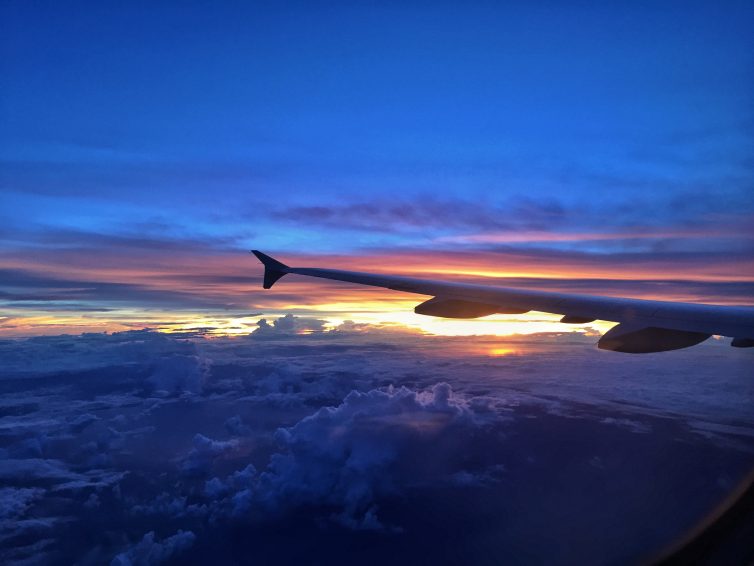
A sunset landing is always a treat, but what about a night at the airport? – Photo: Manu Venkat | AirlineReporter
Even for the most enthusiastic air travel aficionados, the idea of an overnight layover probably sounds awful.
Airports, after all, are an awkward place to spend the night. Hotels by the terminal can be overpriced and uninspiring. Getting into the city isn’t always a realistic option. Transit lounges aren’t always open 24/7, and even if they are, there’s no guarantee that you’ll find a cozy spot to hunker down.
For these reasons and more, overnight layovers are anathema for the business traveler elite. But for flyers looking for dirt-cheap tickets, they are sometimes a necessary evil.
But hey, we AvGeeks are an adventurous bunch, right? I figured there must be at least a tolerable way to make it from sunset to sunrise without leaving the airport. And with summer travel plans that would place me overnight at Tokyo Haneda for not just one night, but three, I had the chance to put that guess to the test.
Could there be such a thing as a good overnight layover? Join me for my three nights at Haneda ’“ each spent very differently ’“ to find out.
Off we go!
%CODE1%
A look towards downtown San Francisco on the departure to Tokyo – Video: Manu Venkat | AirlineReporter
Night One: Camping Out in the Concourse
For my first night’s stay, I wanted to set a baseline for how bare-bones an overnight layover could be. No lounges. No hotels. Just some quality time with a concourse seat.
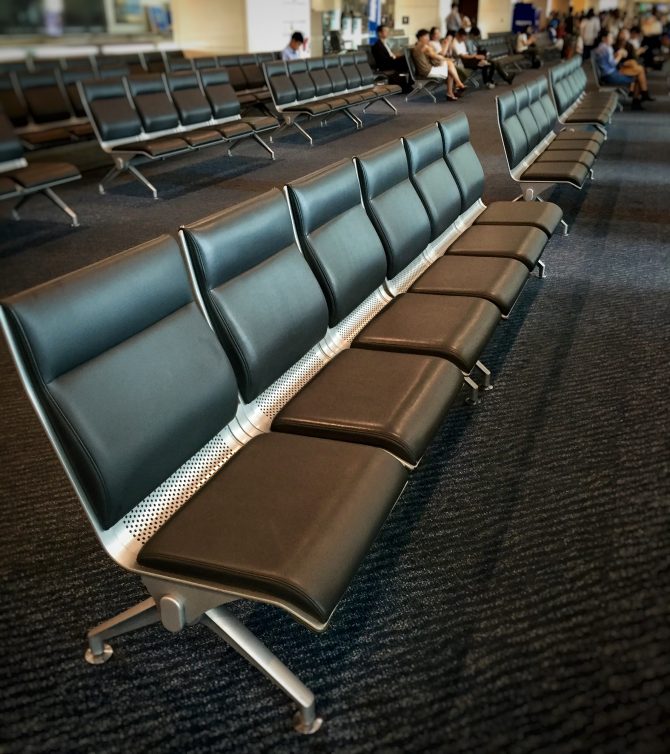
My home-sweet-home for eight hours – Photo: Manu Venkat | AirlineReporter
And you know what? It wasn’t comfortable, but it was nowhere near as bad as I feared it might be.
To be fair, Haneda has a lot of things going for it that other airports don’t. The bench-style seats without handrails allowed me to lie down and stretch out comfortably enough. Security guards regularly patrolled the space, so I felt safe enough sleeping with my suitcase next to me. The concourse lighting is also dimmed during the late night hours.
Haneda’s flight operations shut down overnight, but the international terminal stays open 24/7. This means that the concourse is pin-drop-quiet for the night, at least until the early morning flights start departing. It was surreal to have an entire international airport almost to myself. And in case you haven’t been there, Haneda’s new international terminal is gorgeous.
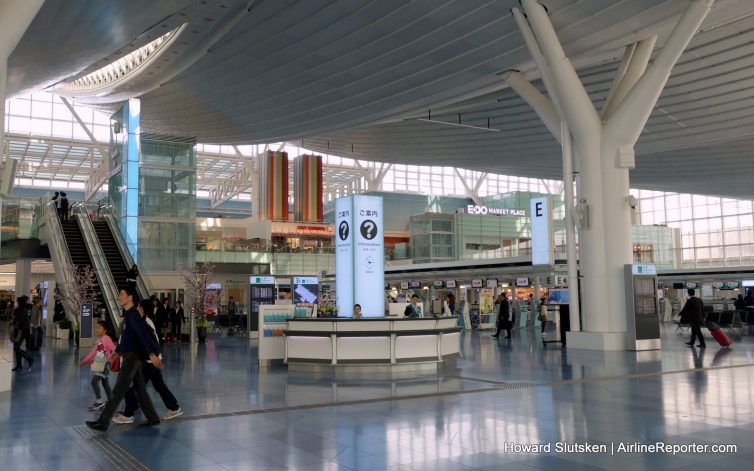
The new international terminal at Haneda
Sure, the night had its rough moments. There was no privacy, no morning shower, and no bedding or pillow. I got woken up by some construction noise at one point and had to move down the concourse. But I still got a couple hours of sleep, and boarded my flight the next morning somewhat rested. In a pinch, it’ll do.
Night Two: A Lounge For the Rest of Us
Okay, enough bumming around. For my second night, I decided to do things in a bit more style.
For many travelers, that would mean an airline lounge. The problem was, I had recently lost the airline alliance status that used to get me in to lounges for free. At most airports, I would have faced a choice between a $50-$60 lounge buy-in (no thanks) and sticking it out in the general concourse. But TIAT, Haneda’s operating authority, offers an innovative à la carte lounge model with an entry fee of just ¥1,030 ($10).
What sort of place does $10 buy you? A pretty solid one, it turns out, provided you go in with the right expectations.
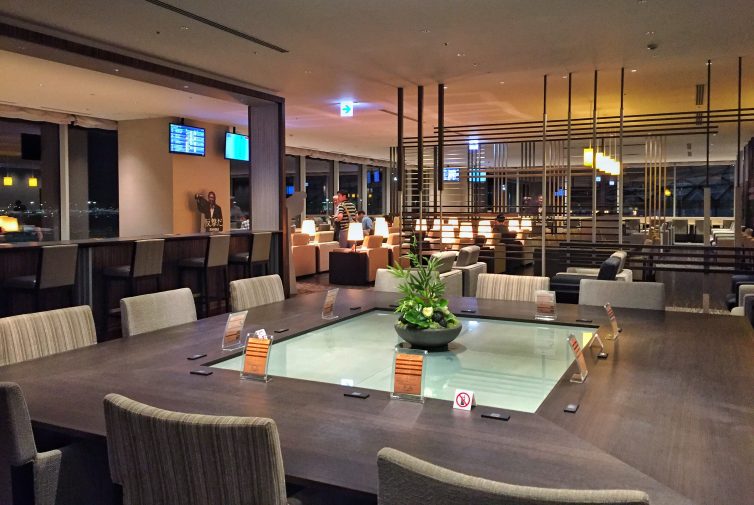
The TIAT Sky Lounge Annex at Haneda – Photo: Manu Venkat | AirlineReporter
The TIAT Sky Lounge Annex was inviting and well maintained, with modern furniture and a variety of seating areas. Though the sun had set by the time I arrived, I could tell that there would have been a great view of the tarmac and active runways during the day.
BONUS: Plane Spotting at Tokyo International Airport – Haneda
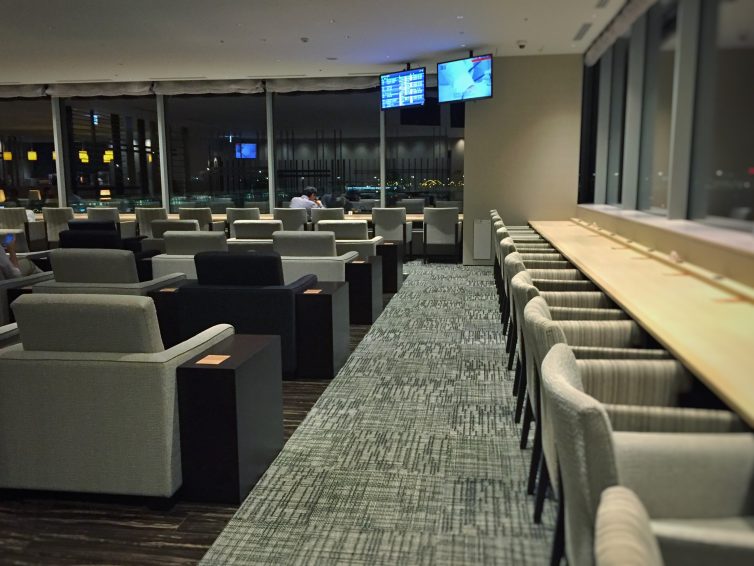
Seating options at the TIAT Sky Lounge Annex – Photo: Manu Venkat | AirlineReporter
Non-alcoholic drinks, including sodas, hot drinks, and juices were available for free. As part of the à la carte model, snacks, larger meals, and alcoholic drinks could all be ordered for an additional price. Shower facilities were also available for a fee.
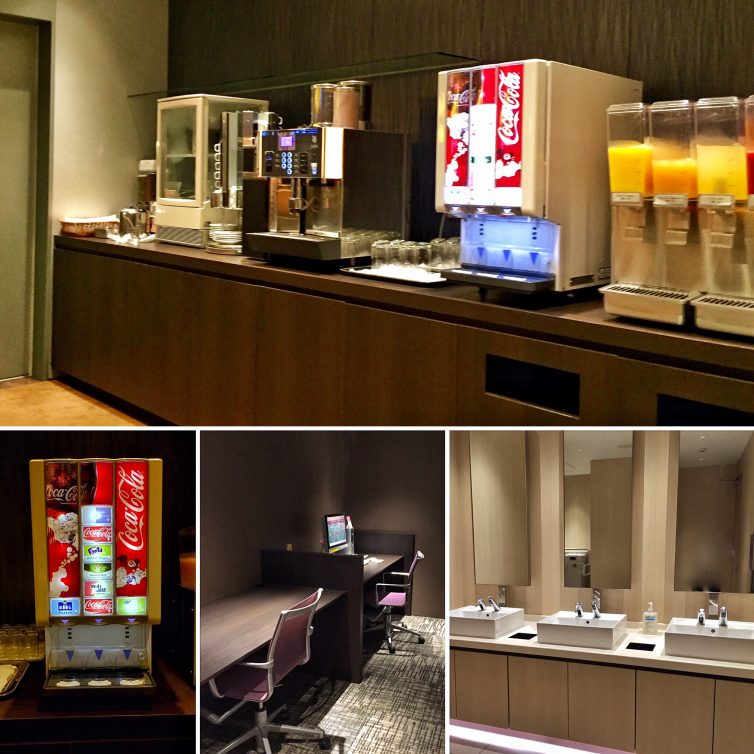
Not a bad place to spend a few evening hours – Photo: Manu Venkat | AirlineReporter
Overall, I thought that the TIAT Sky Lounges are an amazing value for a traveler looking to kill some time. The main (non-annex) lounge is open 24 hours a day, so it’s workable for even a longer overnight layover ’“ provided you’re okay foregoing sleep, as there are no beds.
The pay-for-what-you-use model isn’t a hit everywhere in the aviation world (I’m looking at you, Spirit), but it worked great here.
Night Three: Snagging a Cabin, and Getting Into Hot Water
What do you do if you want to get some sleep on a real bed but don’t want to shell out for a hotel room? At many airports you would be out of luck. But once again Haneda had me covered.
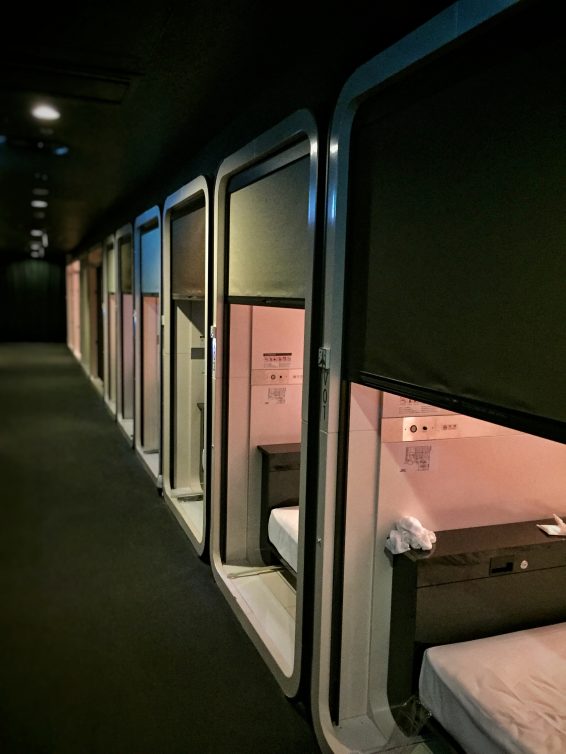
An airport hotel with only the bare essentials – Photo: Manu Venkat | AirlineReporter
First Cabin Haneda is a cross between a traditional hotel and the capsule-style hotels that Japan is famous for. It is located in Domestic Terminal 1, pre-security at the center of the terminal. For ¥5,000 to ¥6,000 ($50 to $60) a night, you get a tiny space just large enough for a bed, separated from the hallway by a sliding screen. The limited space and lack of a door might be jarring for anyone used to hotel rooms, but it’s perfect for those with simple tastes or tight budgets.
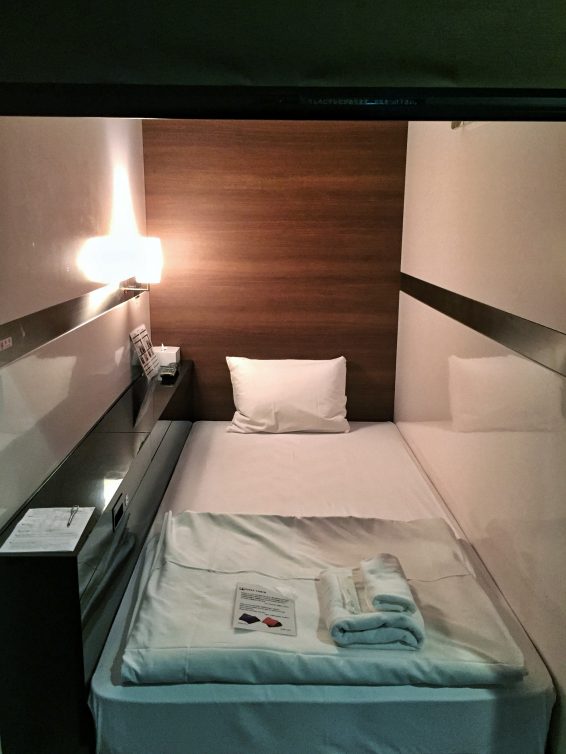
The “Business Class” cabin, when all you need is a bed – Photo: Manu Venkat | AirlineReporter
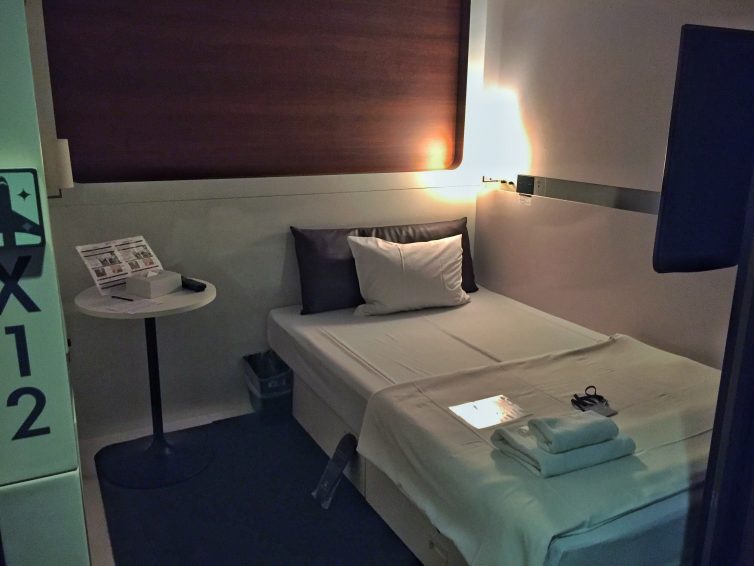
For just a bit more, you can book a roomier “First Class” cabin – Photo: Manu Venkat | AirlineReporter
There is a nice communal space available if you need a place to work, or if your capsule cabin has you feeling claustrophobic.
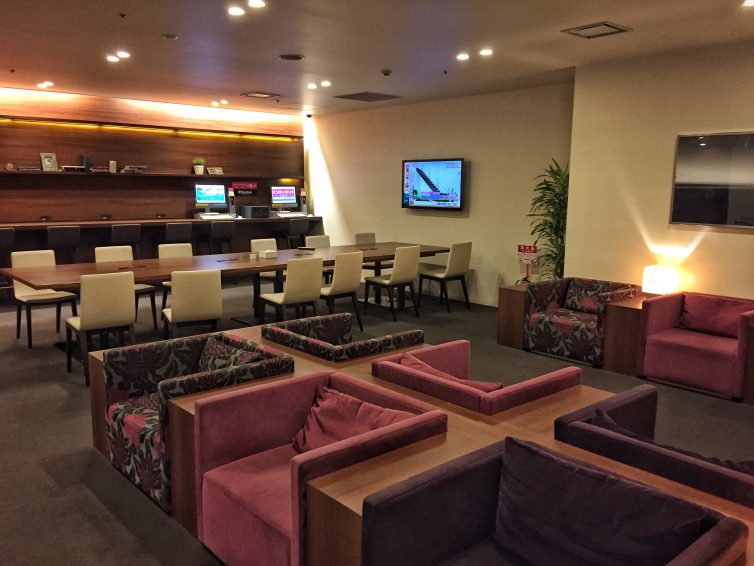
The First Cabin Haneda lobby lounge – Photo: Manu Venkat | AirlineReporter
The communal sinks and showers were immaculately maintained.
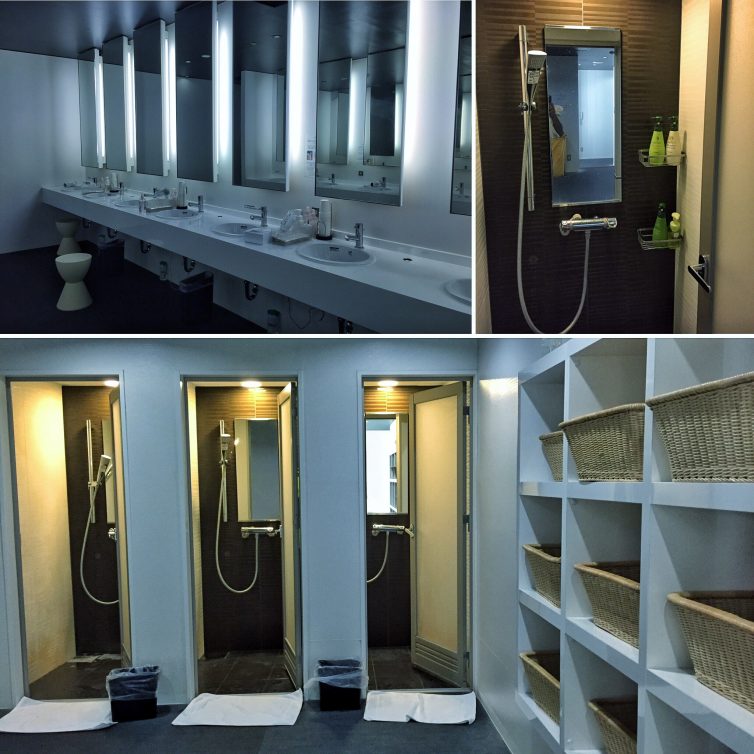
The common bathroom facilities at First Cabin Haneda – Photo: Manu Venkat | AirlineReporter
But the real fun was the Japanese onsen, or traditional bathhouse. The experience is all-communal ’“ not to mention all-nude. It begins with a sit-down rinse.
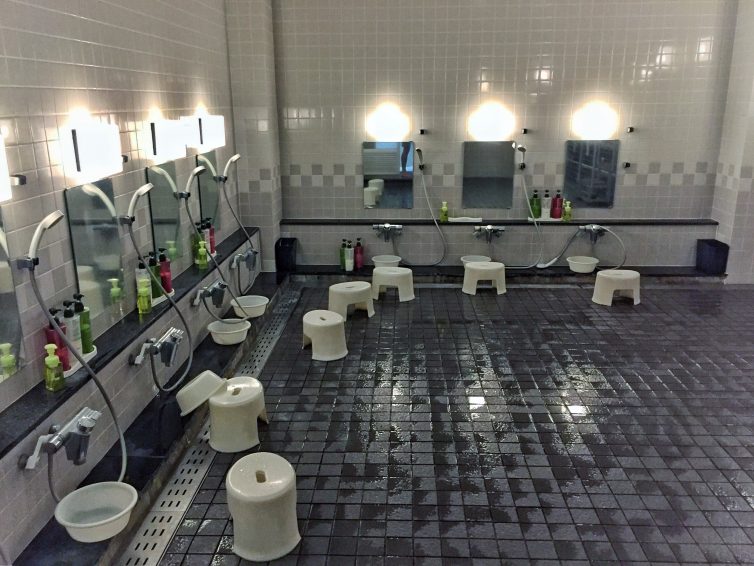
Half of the communal onsen bath: the sit-down showers – Photo: Manu Venkat | AirlineReporter
Then, you take a soak in a scalding hot bath.
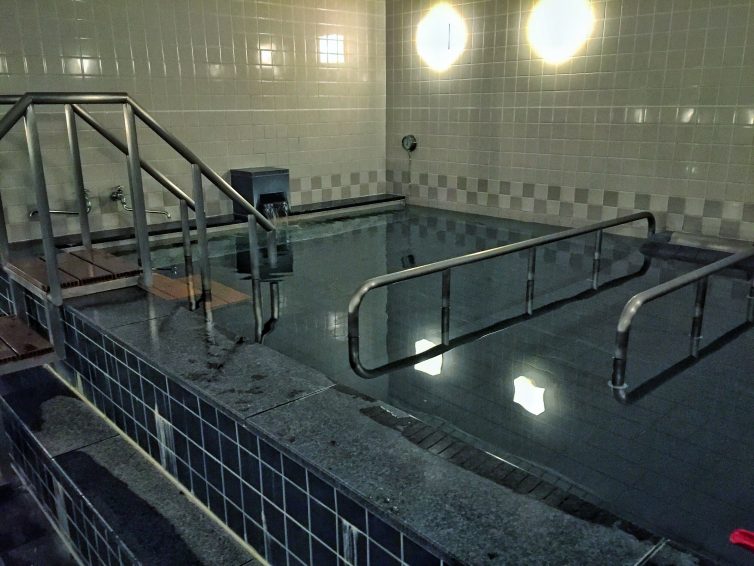
The other half of the onsen: the hot water bath – Photo: Manu Venkat | AirlineReporter
Fortunately for clueless first-timers like me, First Cabin provided a sheet with instructions.
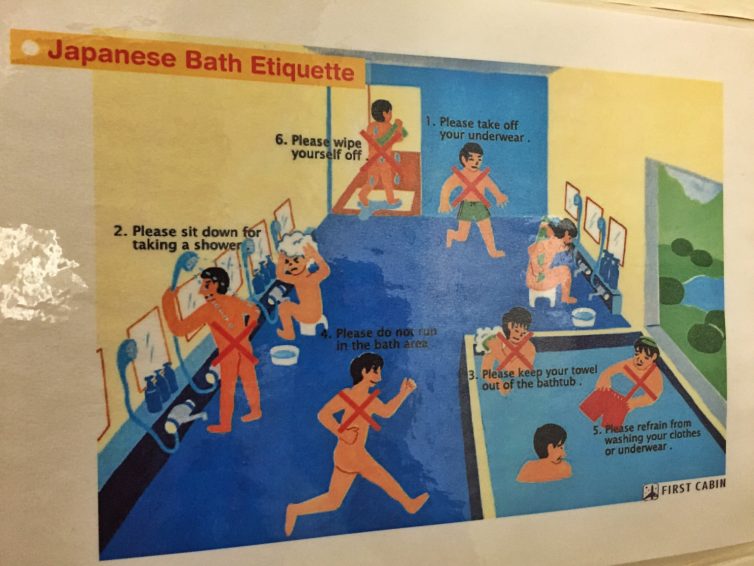
A helpful guide on how to avoid making a fool of yourself in a Japanese-style onsen bath – Photo: Manu Venkat | AirlineReporter
It was probably the most unusual experience I’ve had within the four walls of an airport. Onsen baths are built around the concept of “Hadaka no Tsukiai,” which translates loosely to “friendship or communion through nakedness.” It’s an intriguing idea, but I’m still glad I ended up getting the bath to myself.
First Cabin Haneda is an excellent value for the simple traveler who just needs a bed and a shower (or hot bath) without extra bells, whistles, or cost. Because it is over in domestic Terminal 1, it’s best for people with international-to-domestic transfers (or vice versa). If you just need a pit stop, First Cabin offers short stays for $8 to $10 an hour during the day.
BONUS: Trains, Subways, and a Monorail – A Day Exploring Tokyo by Transit
Of course, you could always try out a real capsule hotel in the city. At three-feet wide, three-feet high, six-feet long, and stacked one on top of the other, the capsules make the First Cabin Haneda rooms look palatial.
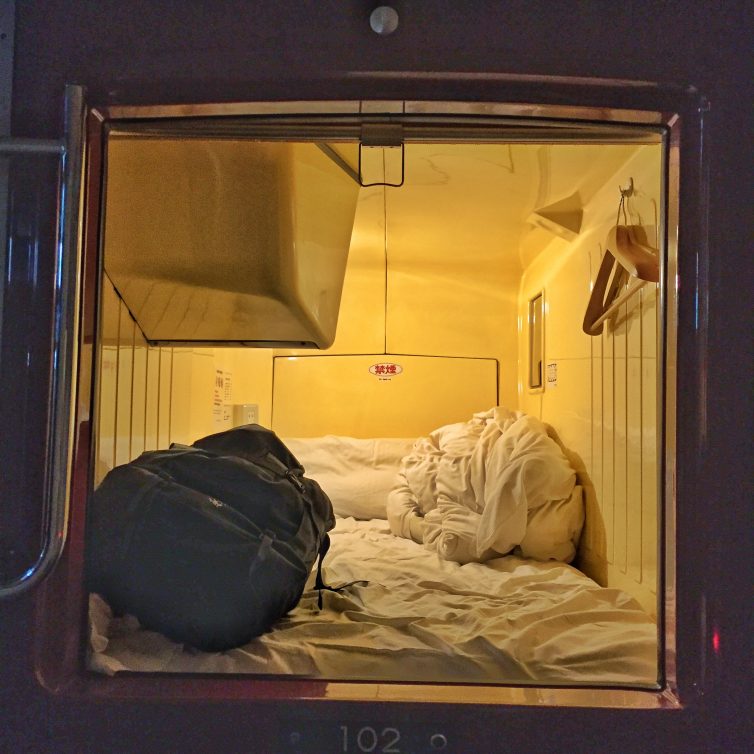
An authentic capsule hotel in Tokyo city – Photo: Manu Venkat | AirlineReporter
Sunrise, and the Final Verdict
I set out in search of an tolerable and affordable way to spend a night at the airport. Did I find one?
I think the answer is a definite yes. First Cabin Haneda had everything I needed in a space-efficient package, plus a unique dash of Japanese style. The TIAT Sky Lounge provided a great place to pass the time, and welcomed me even though I had fallen off premier airline status wagon. And while I wouldn’t be excited about another night on a transit lounge bench, that first night still beat my expectations.
Do you have stories about great (or awful) nights at airports? Or any pro tips on how to best handle overnight layovers? Tell us your stories and share your advice in the comments section below.
Comments are closed here.
This sounds way better than the time I tried to sleep in Dublin airport in 2008. I still have the announcement they blared through the speakers ever 15 DAMN MINUTES burned into my brain.
“Please don’t leave your baggage unattended, any unattended bags will be destroyed”.
Also every time I found a nice place to lie down the cleaning staff needed to clean that location. GAH!
Thanks for the story, Tom. Sounds like the experience was pretty awful. I’ve only been to Dublin’s international terminal once. I liked it, but I guess there’s a big difference between what makes an airport good for a short stop vs. what makes it a good place to get some sleep.
Nice piece, Manu. Definitely not something I would have expected. I laughed, I cringed. I left a bit smarter.
Thanks! Glad you enjoyed it, (cringeworthy moments and all)
FYI, unique is an absolute. It can’t be modified.
“First Cabin Haneda in domestic Terminal 1 is a cross between a traditional hotel and the capsule-style hotels that Japan is famous for. For ¥5,000 to ¥6,000 ($50 to $60) a night … ”
Manu, where exactly is First Cabin Haneda in T-1: what floor; at which point on that floor – north, center or south? Is it near a easily distinguishable shop or store? Can you supply a Link to a webpage that identifies where it is? These details would be helpful.
Hey Joe, good point. I included a link in the body of the article. First Cabin is pre-security, at the center of the building. I think airport signage may sometimes refer to it as just “airport hotel.” The website has more info on the location, but the terminal isn’t huge so it’s not hard to find. Thanks for reading.
Manu, I didn’t notice your link, previously. Nonetheless, I found that site on my own and see that First Cabin is on the Arrivals Floor of T-1. I’ve been to HND many times, during daytime; to enjoy the continuous action. But I never even knew about First Cabin! So, well done!
I may need to give First Cabin a try in order to photograph the elusive ANA Star Wars 789 JA873A. As seen on FR24 it usually departs HND before 10 am.
Try ICN airport, free wifi, tablets, blankets and sleeping area!
http://tipsfordigitalnomads.com/you-wont-guess-which-airport-i-like-sleeping-in/